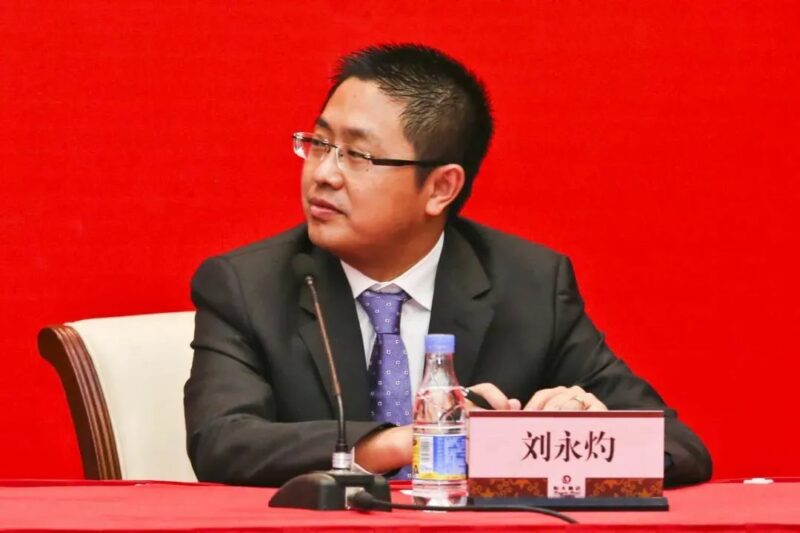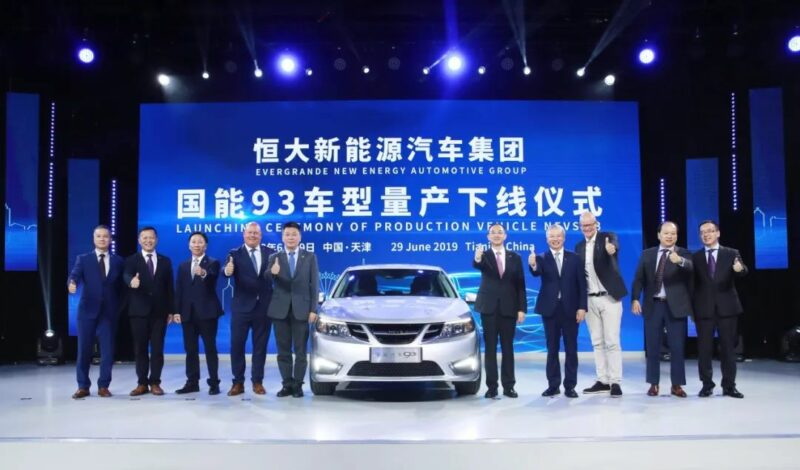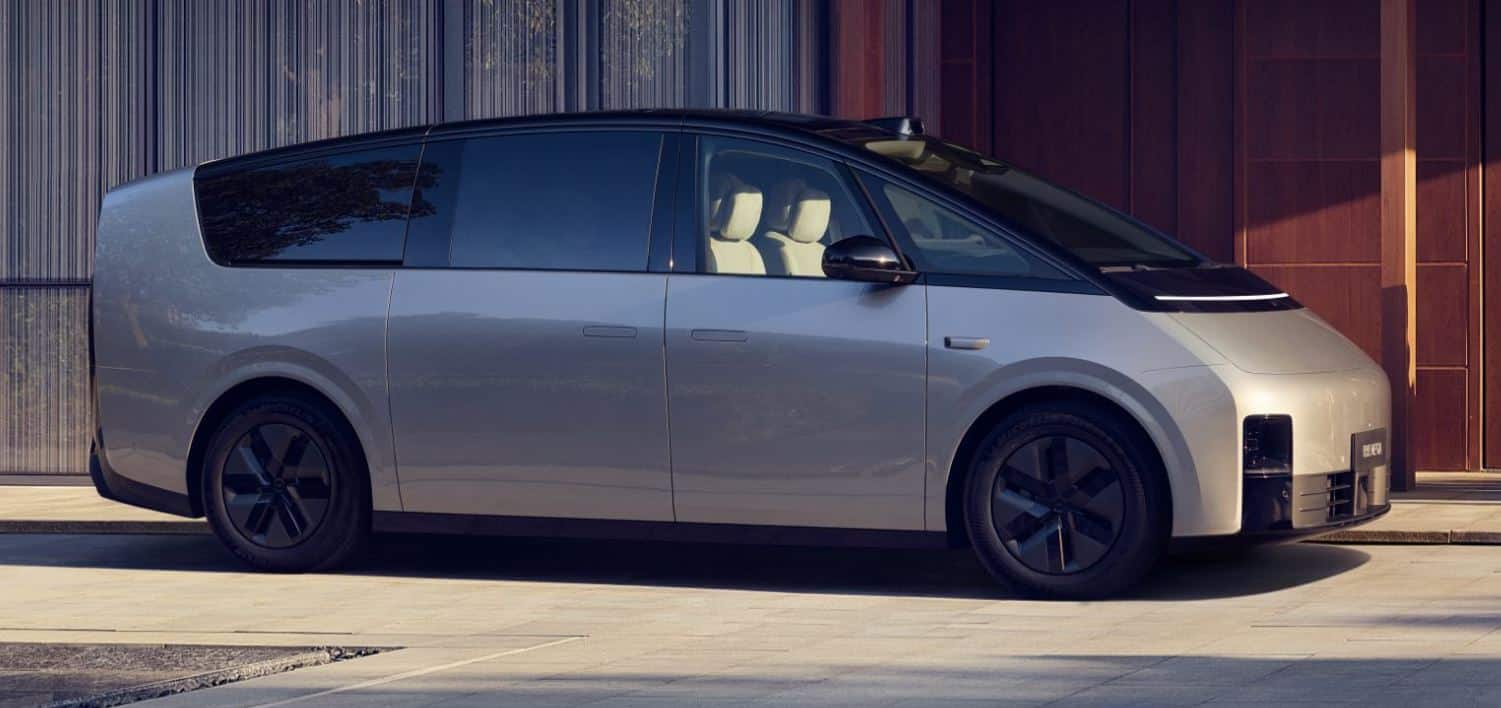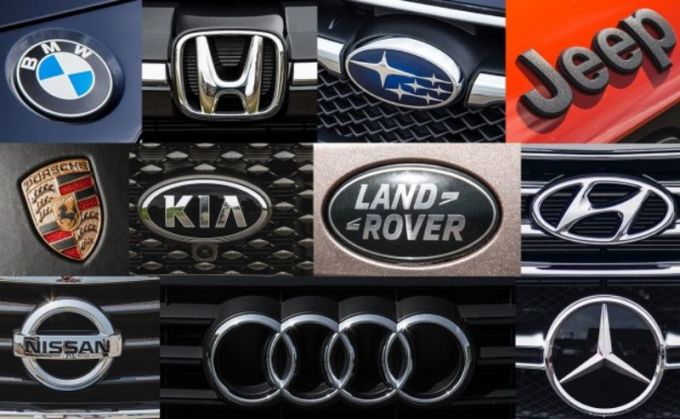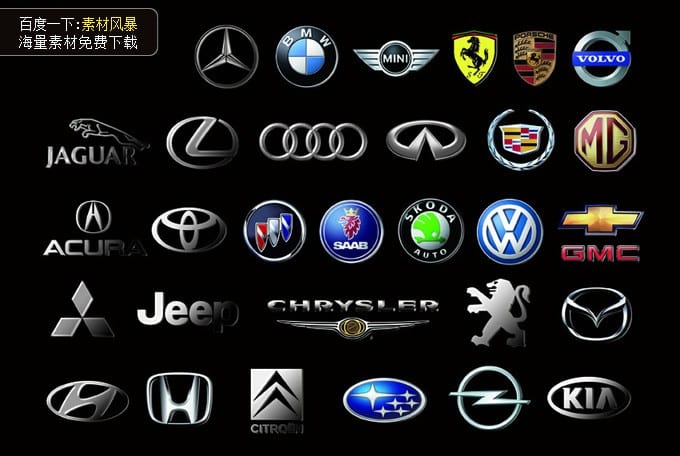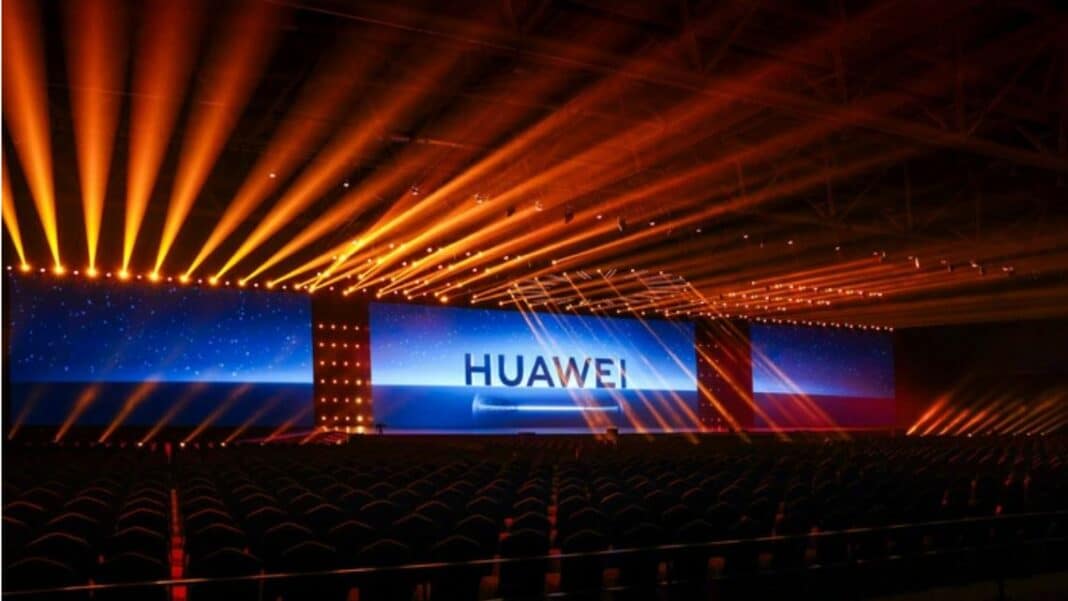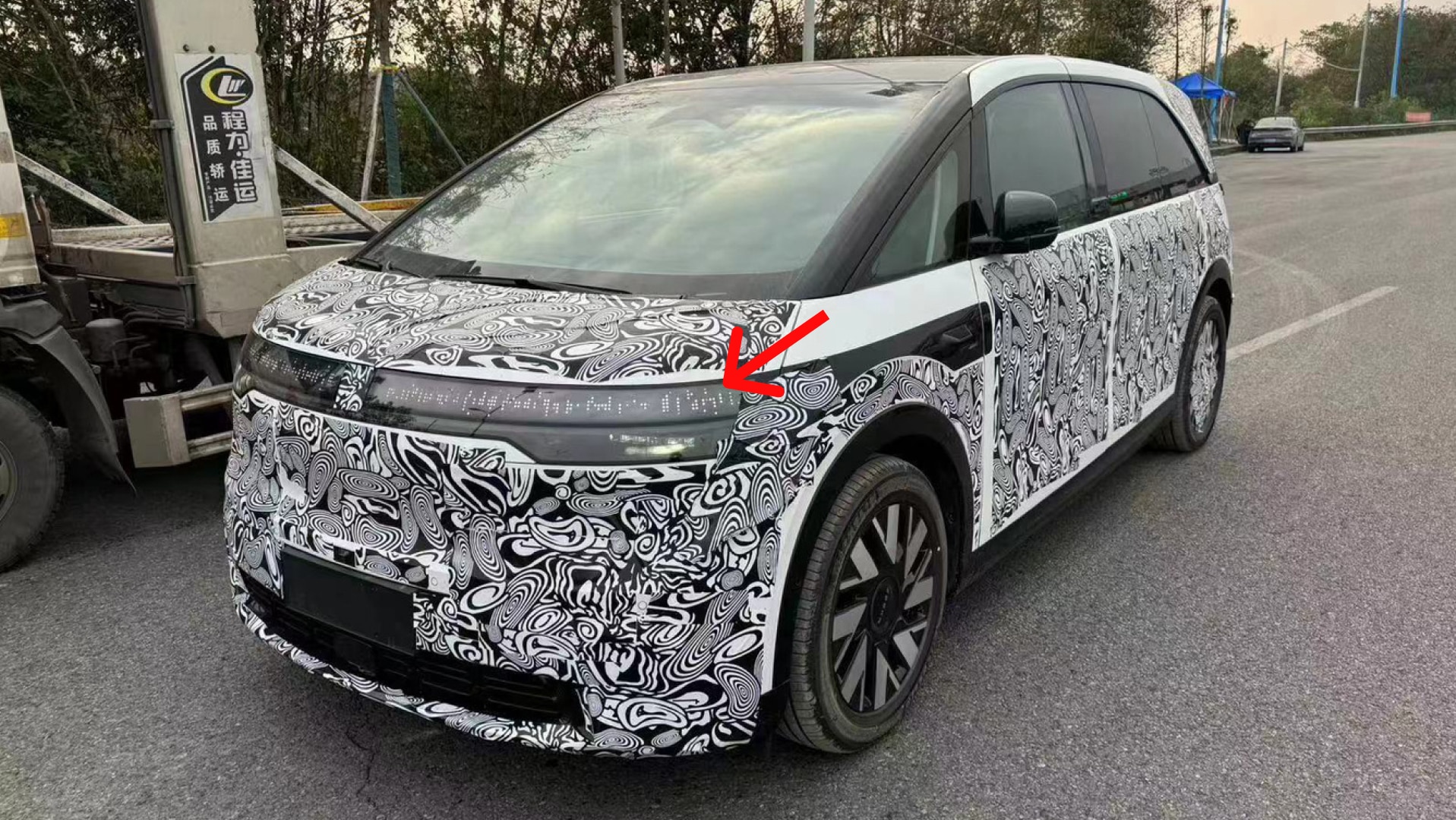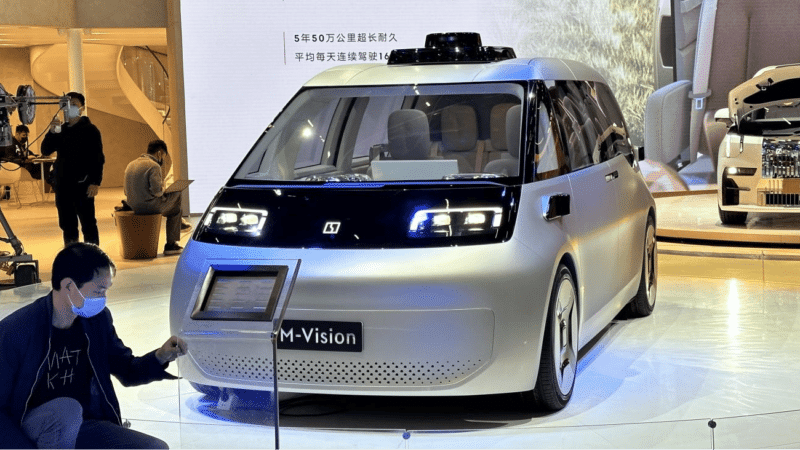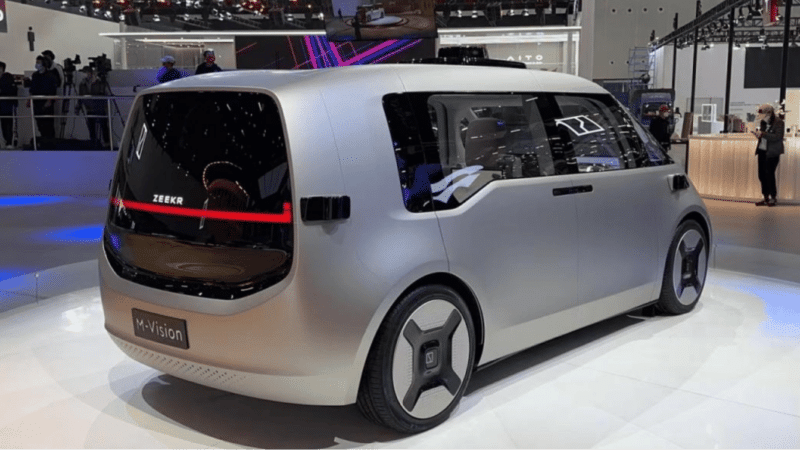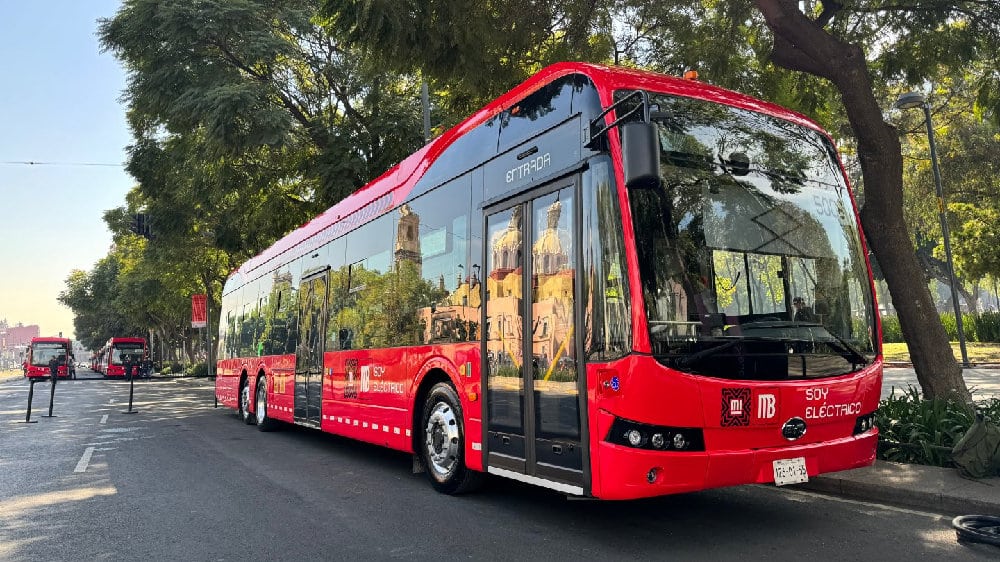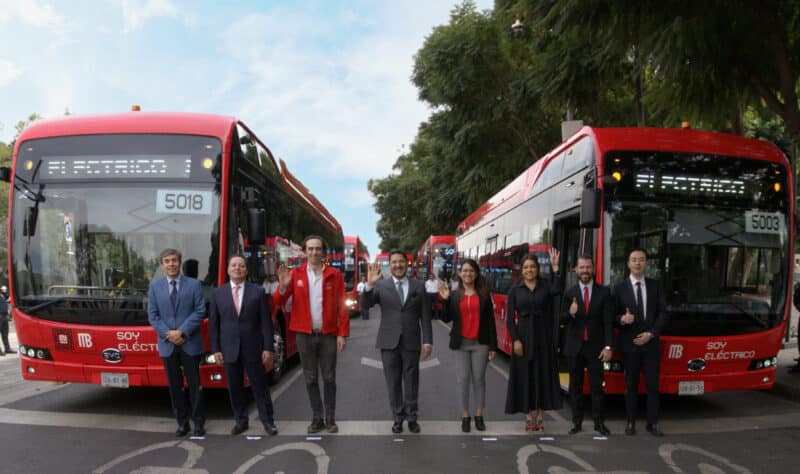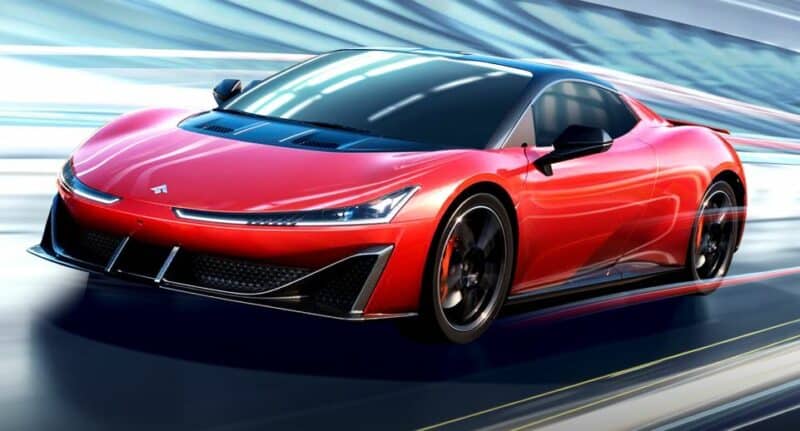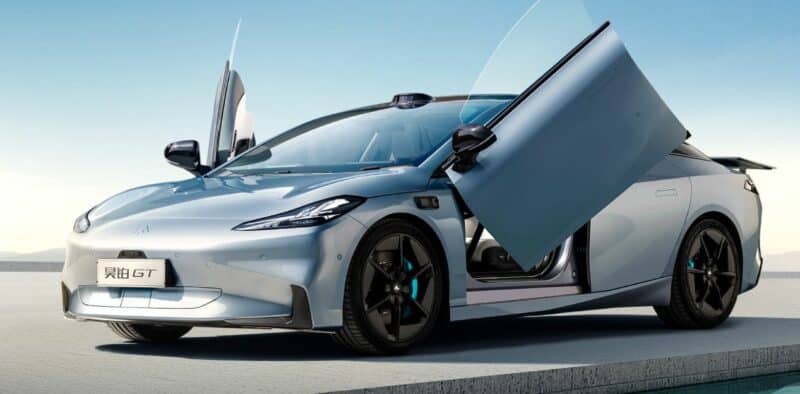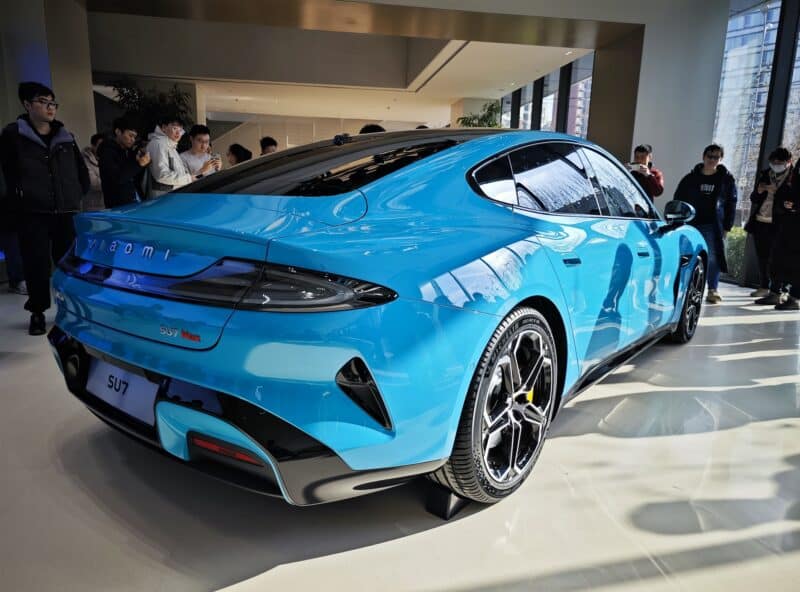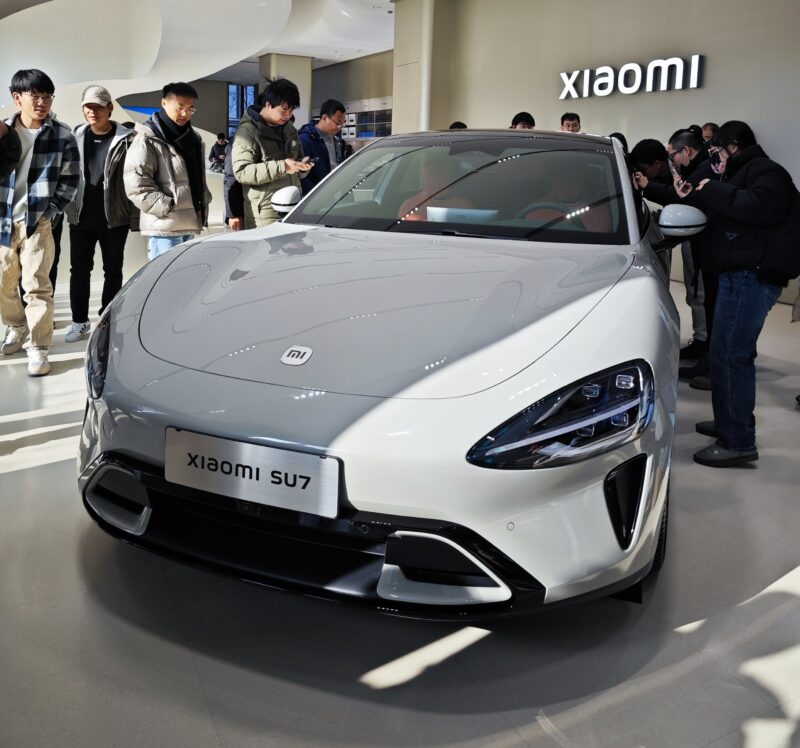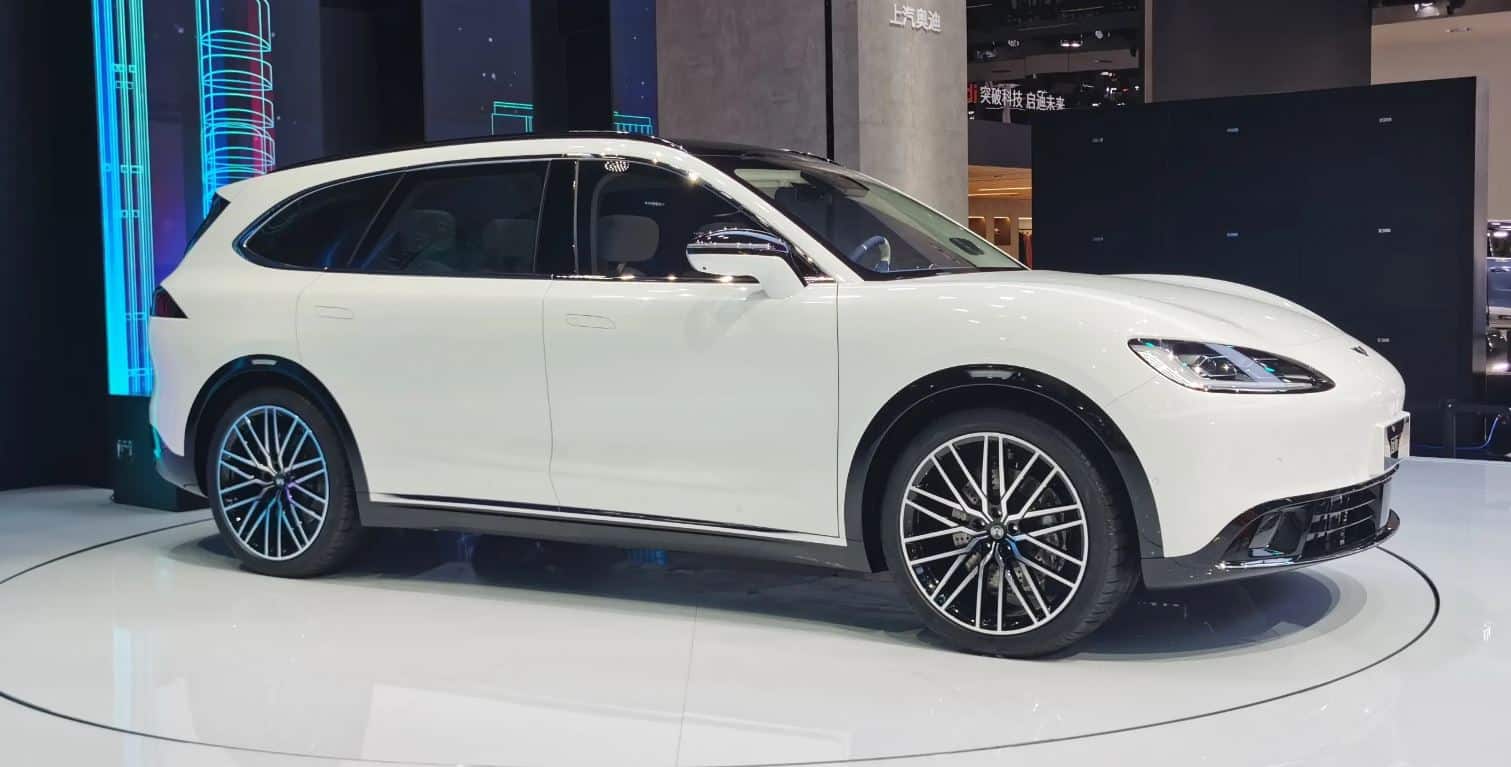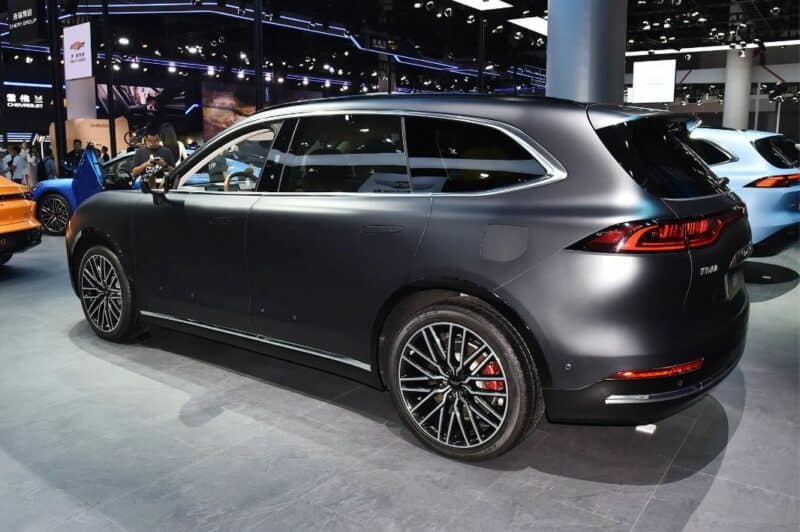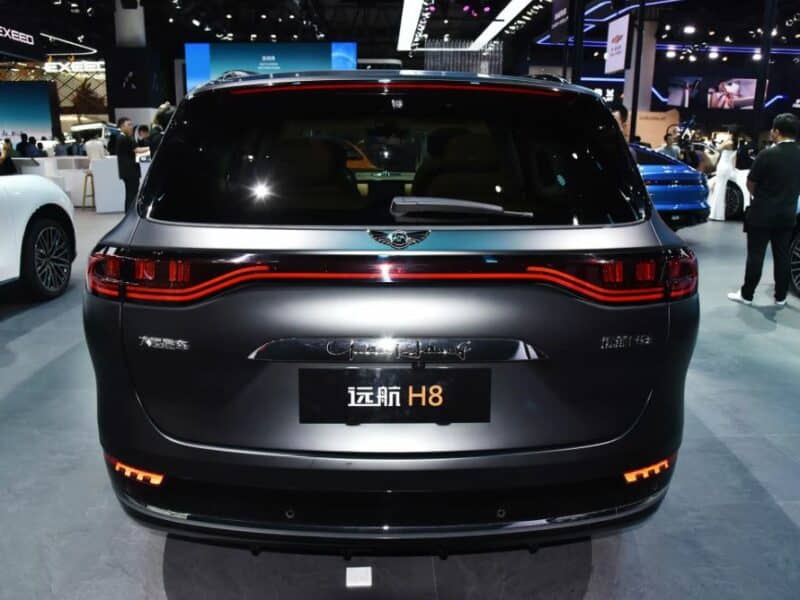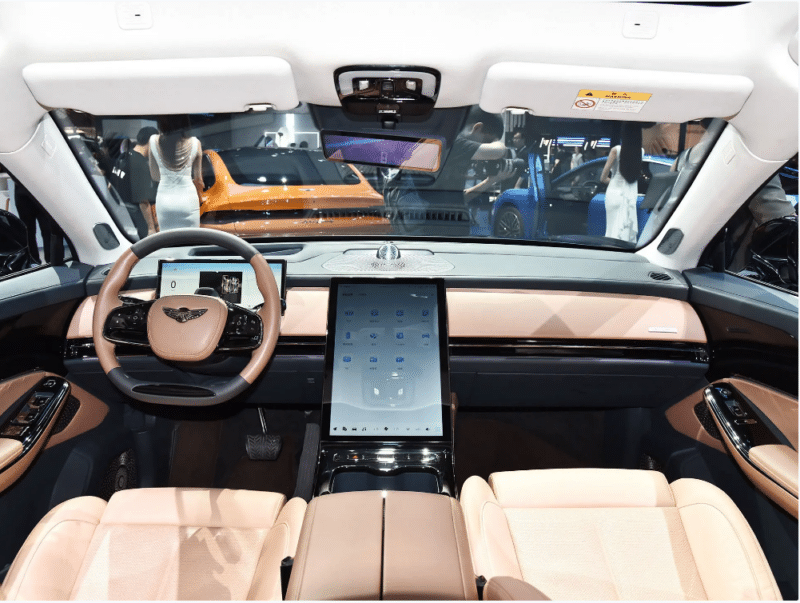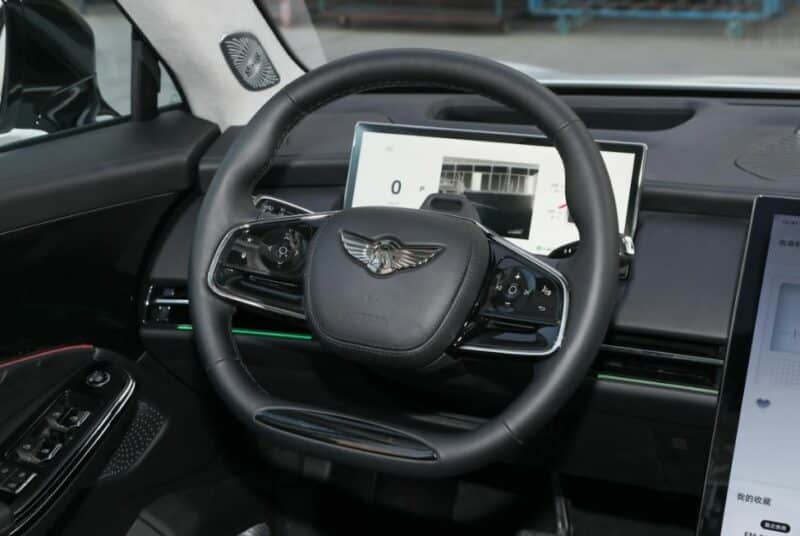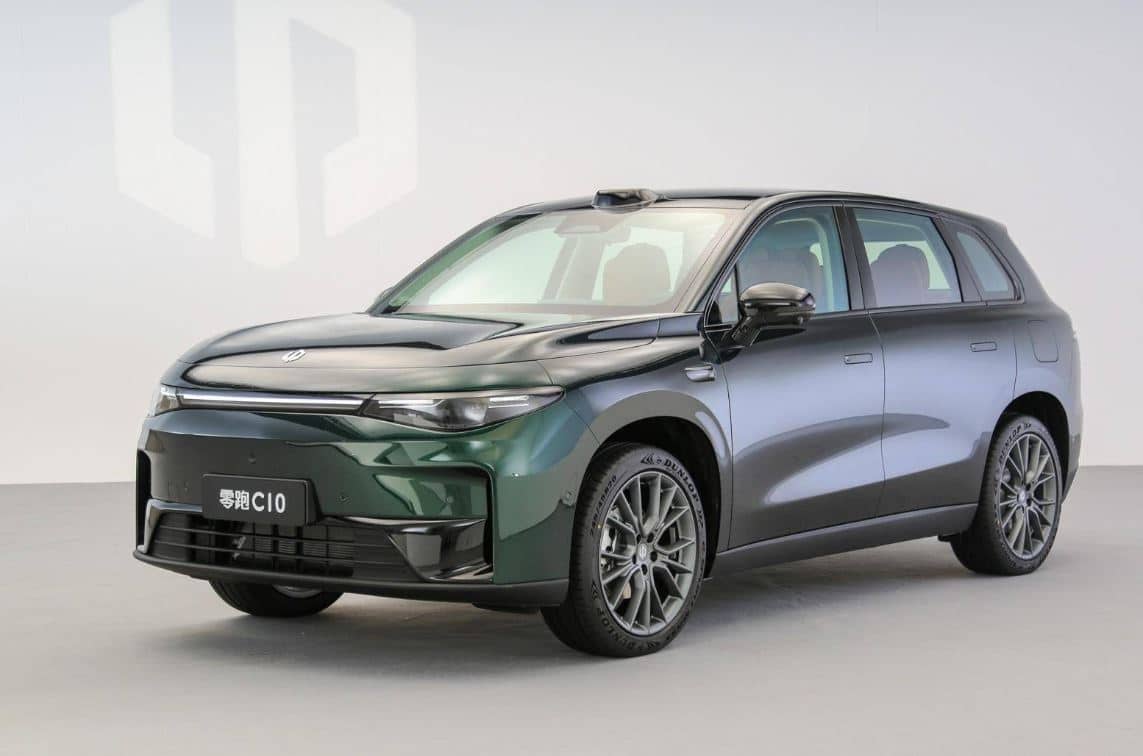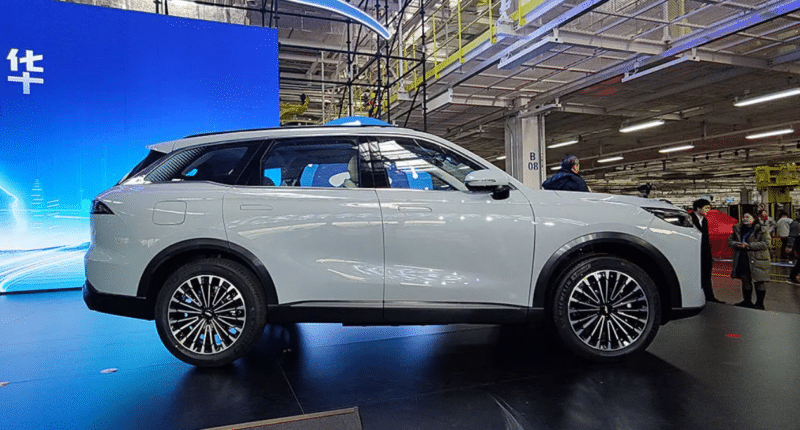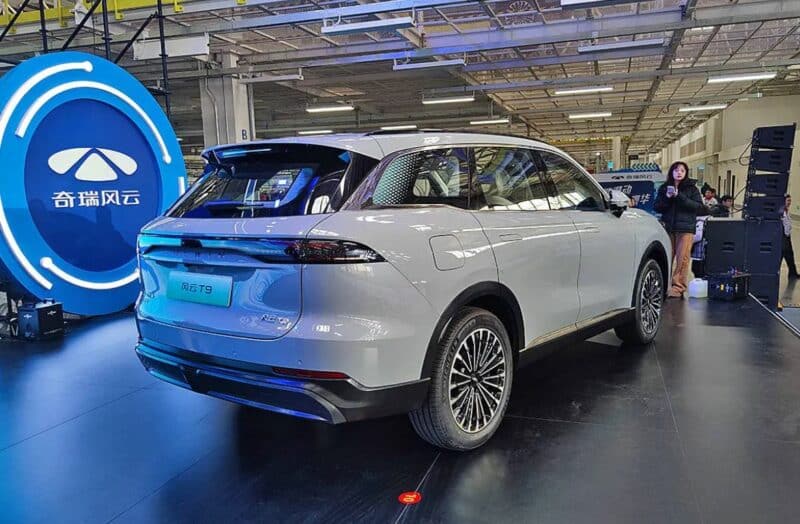Yommie
SpeedLimited
- Oct 2, 2013
- 64,184
- 37,190
- Country of Origin

- Country of Residence

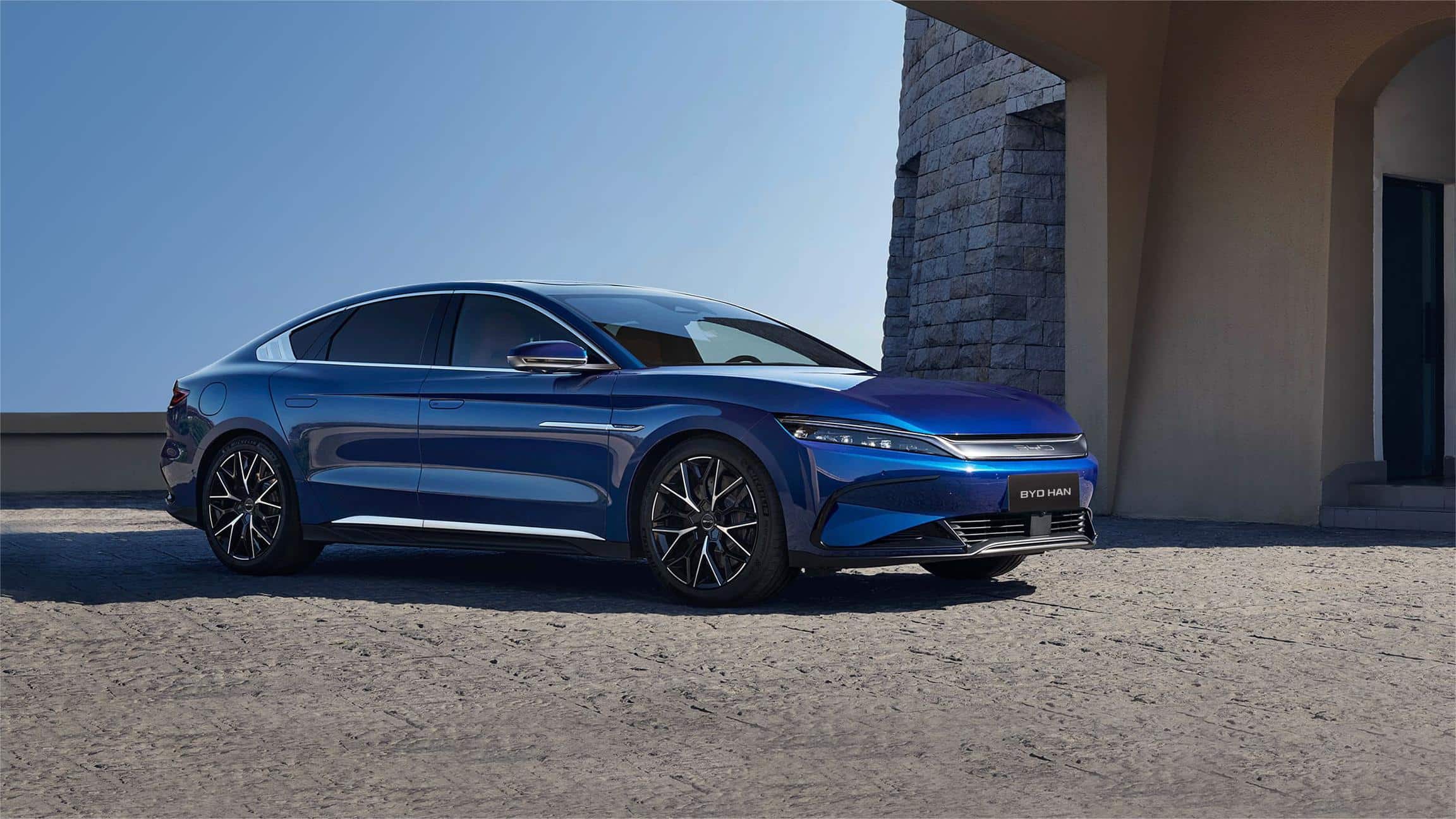
BYD sold 3.02 million vehicles in 2023, up 61.9%
BYD has achieved its sales target of 3 million vehicles set at the beginning of 2023. Sales include 1.57 million pure EVs. BYD has achieved its sales target of 3 million vehicles set at the beginning of 2023. Sales include 1.57 million pure EVs.
 carnewschina.com
carnewschina.com
BYD sold 3.02 million vehicles in 2023, up 61.9%
Reading Time: 3 minutes
Qian Jin
January 1, 2024
2
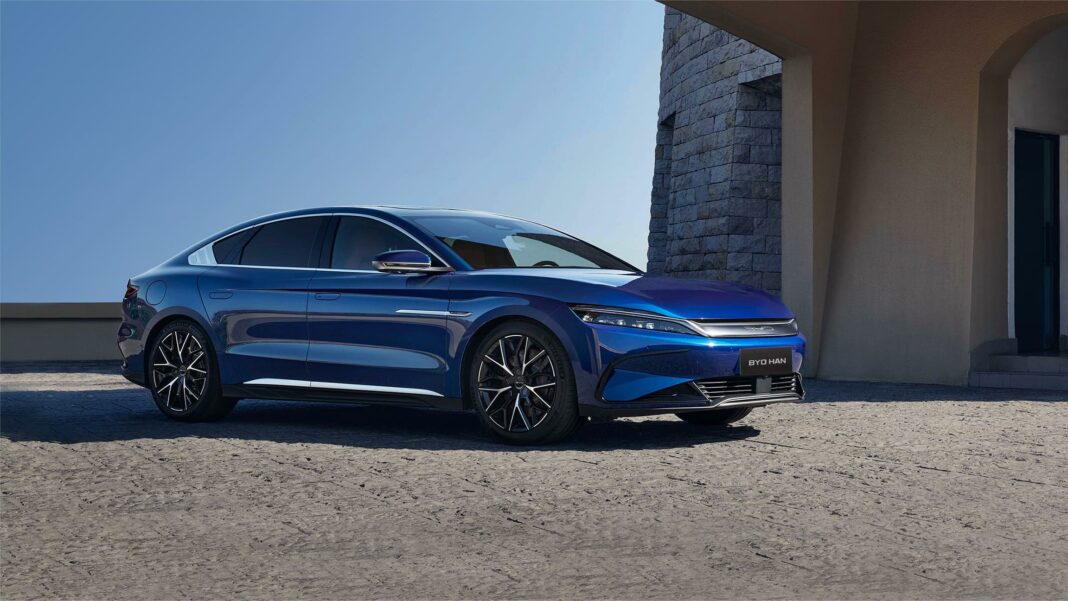
News like this to your inbox or phone?
Weekly summary to your inbox
I want this
Never miss and important news
Get Instant notification once the news is published.
Follow Us
BYD has reported the sale of 3,024,417 new energy vehicles in 2023, reflecting a year-on-year increase of 62.3%. These sales significantly surpass the previous year’s sales record of 1,863,494 vehicles.
Let’s take a brief look at the situation in December. In December, BYD sold 341043 cars, an increase of 45.0%. Among them, the sales of EVs were 190754 units, an increase of 70.4%, accounting for 56.1% of the total passenger car sales for the month.
A key contributor to this success has been BYD’s dedication to new energy vehicle production, with 3,045,231 units manufactured in 2023, presenting a year-on-year increase of 62.2%.
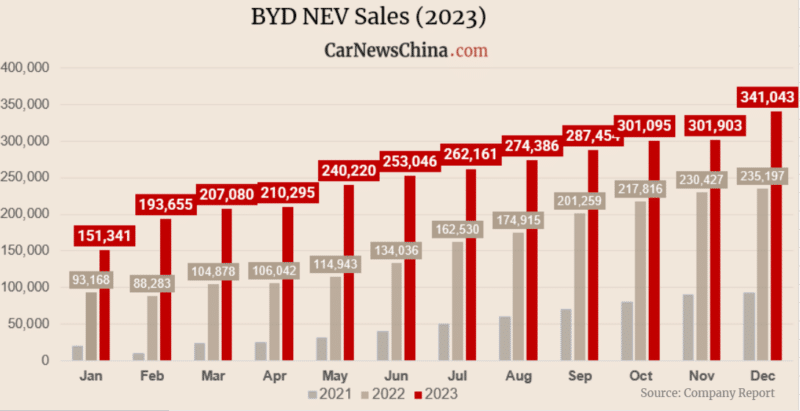
Notably, BYD’s commercial vehicle segment has played a pivotal role, recording sales of 11,511 units in 2023. This category encompasses electric buses, trucks, and other vehicles, experiencing a notable uptick of 88.2%. This growth in commercial vehicle sales outpaced the company’s overall sales growth.
Zooming in on the passenger car business, BYD’s sales in this segment reached 3,012,906 units in 2023, marking a year-on-year increase of 62.2%. A particularly noteworthy trend within this segment is the surge in sales of pure electric models, which totaled 1,574,822 units, indicating a robust year-on-year growth of 72.8%. Battery electric vehicle (BEV) sales have notably accounted for 52.3% of the total passenger car sales, underscoring the increasing consumer preference for electric mobility.

While plug-in hybrid models also exhibited substantial growth, their rate was slightly more moderate than pure electric vehicles. Sales for plug-in hybrid models in 2023 reached 1,438,084 units, reflecting a year-on-year increase of 52.0%.

BYD Group comprises four major automobile brands – BYD, Denza, FCB (focusing on off-road performance), and YangWang (a luxury brand with an average bicycle price of more than 150,000 USD).
BYD’s overseas electric vehicle sales demonstrated an outstanding trajectory, reaching a total of 242,766 vehicles sold in markets outside China in 2023. This staggering figure reflects a year-on-year increase of 334%, surpassing the company’s cumulative overseas sales for nearly two decades.
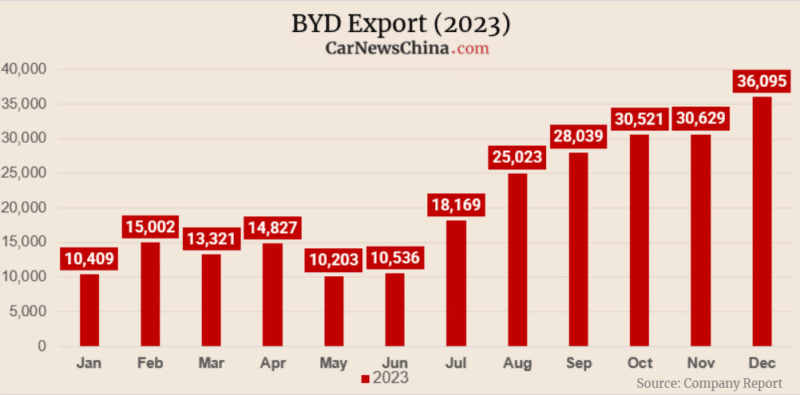
Additionally, BYD has positioned itself as a significant player in battery production, achieving a new energy vehicle power and battery installed capacity of 150.909GWh in 2023. This secures BYD the second position globally, only surpassed by CATL.
BYD’s ambitious goal at the beginning of 2023 was to sell 3 million vehicles, a target that raised some skepticism among industry observers. However, the company has not only met but exceeded this goal. To commemorate this achievement, BYD is providing subsidies to all its dealers in China, offering a reward of 666 yuan (94 USD) for every car sold in 2023, celebrating this significant milestone in its automotive journey.
Source: BYD



